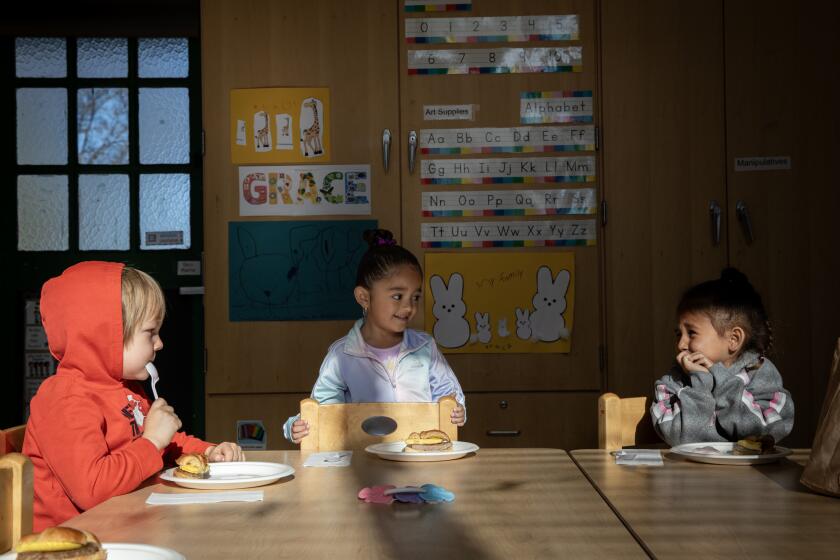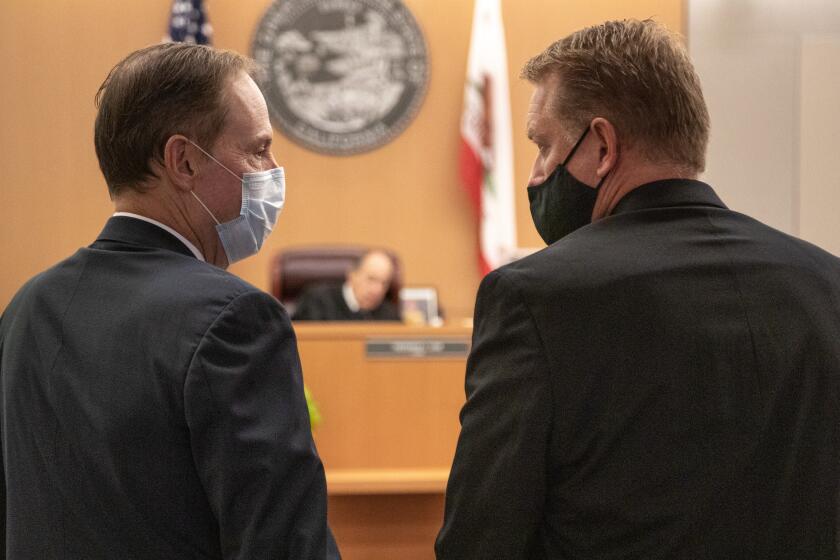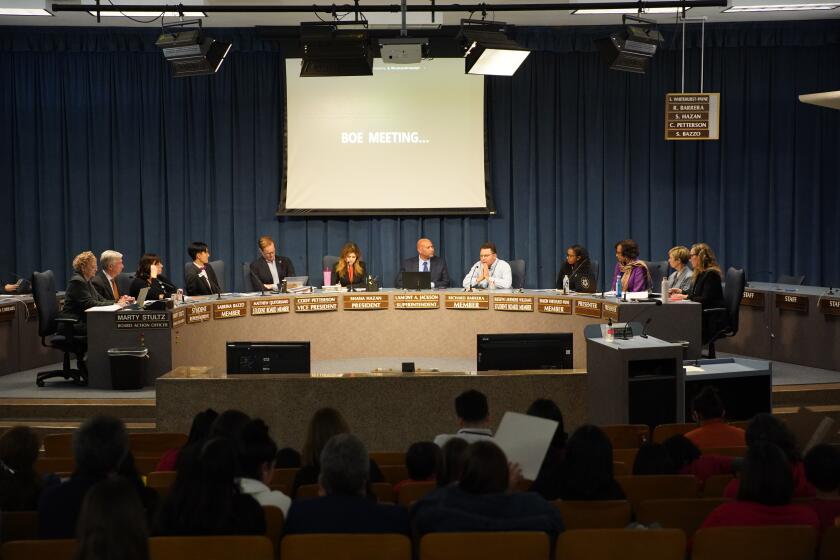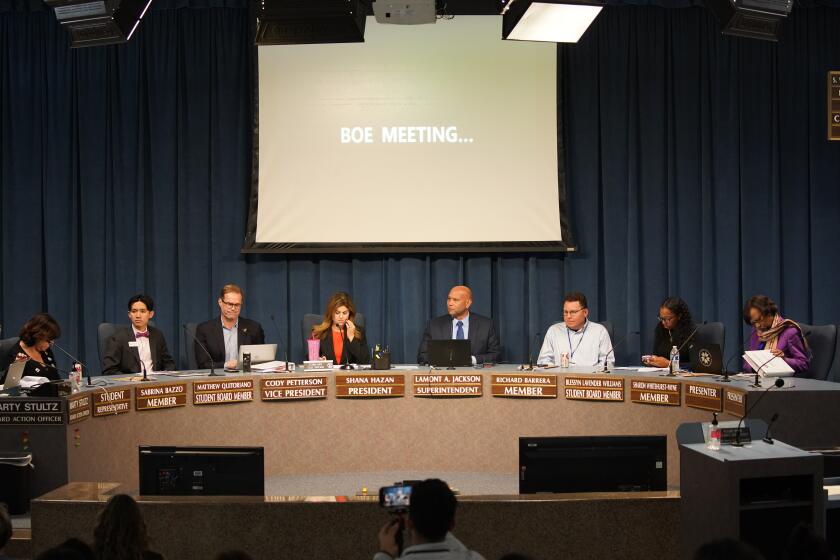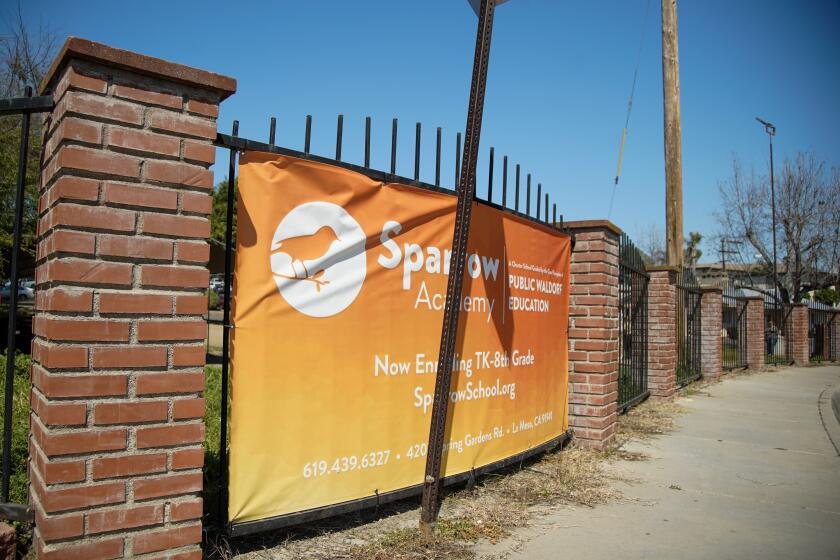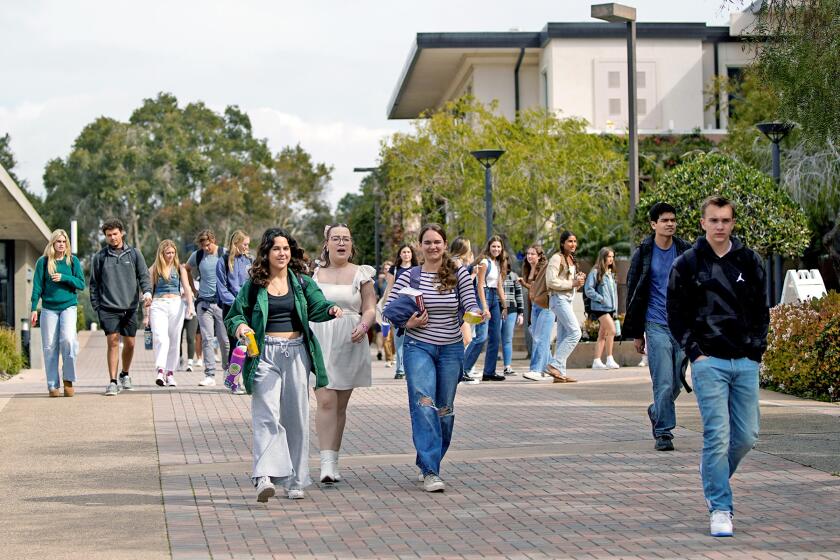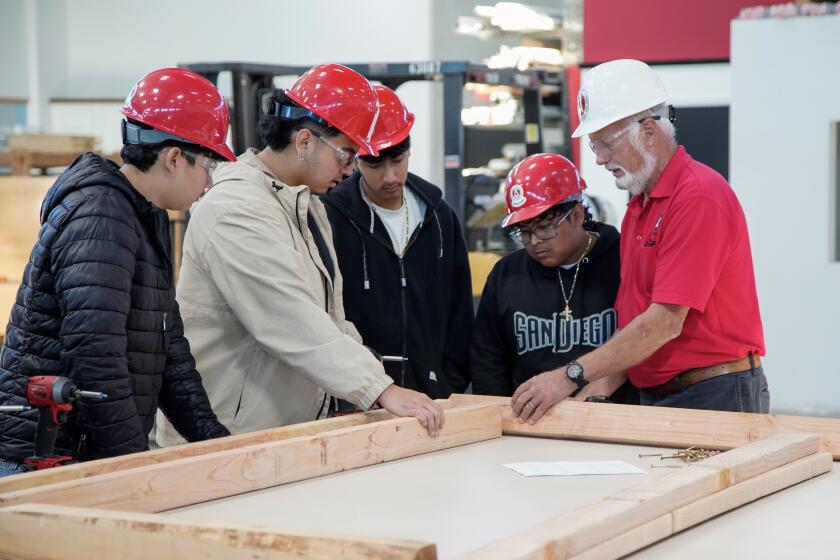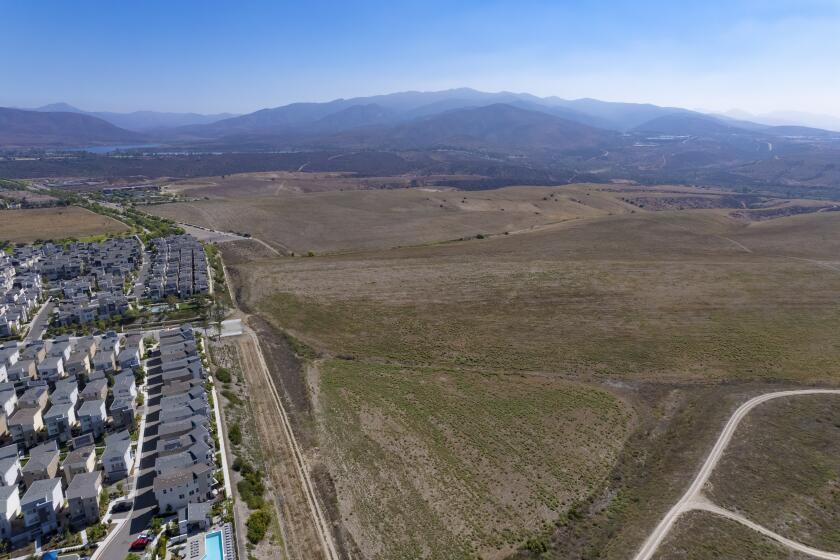San Diego ‘Zoombombing’ incident highlights need for schools to use safety controls
The incident happened on the first day of San Diego Unified’s trial period for distance learning
James Armstrong gasped when he learned what happened during his daughter’s high school advanced biology class, which held a Zoom meeting on Monday, the first day of San Diego Unified’s soft launch of distance learning.
A person with the username “Dee Znuts” wore a red ski mask and a red sweatshirt during the meeting and made several hand signs in front of his computer’s camera, screenshots of the Zoom meeting show.
Another unknown person displayed a photo of a bearded man on their camera and displayed a caption that claimed the advanced biology teacher “Hates BlackPeople.”
A third person Armstrong’s daughter did not recognize typed the n-word in the group chat.
It’s unclear whether any of them were students.
Armstrong, an attorney, found their actions frightening. He said he’s concerned that privacy laws may have been violated, considering that these people could view and hear his daughter’s name and the names of more than 60 other San Diego Unified students who were in the Zoom meeting.
“I know everyone’s adjusting, but, like, whoa! This really freaked me out,” Armstrong said.
Zoom is one of the most popular videoconferencing tools being used during the COVID-19 pandemic. Teachers nationwide are using it to hold remote classes while schools remain physically closed.
But stories of so-called “Zoombombing” like Armstrong’s highlight some of the security risks that come into play when school districts nationwide are forced to quickly switch instruction to online formats because of the COVID-19 pandemic.
Zoombombing is loosely defined as people harassing others, spewing abuse or showing inappropriate content on Zoom, such as racist language or profanity.
Zoombombing reports have prompted some school districts and agencies to ban Zoom, including New York City schools, the largest school district in the country. NASA, SpaceX and the Taiwanese government also stopped using Zoom.
At least one school district in San Diego County — Sweetwater Union High, the county’s second-largest district — says it will not use Zoom.
“We are going to be moving away from Zoom prior to our roll-out with students given some of the security concerns,” Sweetwater spokesman Manny Rubio said in an email.
Rubio said the district is evaluating whether to use other platforms such as Microsoft Teams and Google Meet.
Aside from companies like Zoom, some say it’s also on schools to prevent disruptive incidents.
“I get it; bad things are out there, weird things are out there, but we all manage to have safeguards in place,” Armstrong said. “Just stop if you’re not ready to use the technology.”
Zoom has recently published several statements defending its platform. “At Zoom, ensuring the privacy and security of our users and their data is our top priority,” the company said on March 29.
It also announced Monday that, as of last Saturday, Zoom participants by default must now use a password and be approved in a virtual “waiting room” by the meeting host before joining a meeting.
Nikolas Behar, adjunct professor of cybersecurity at University of San Diego, said he thinks it’s not so much Zoom’s responsibility as it is the responsibility of schools and teachers to enforce safety measures.
“Unfortunately we have to hold the schools accountable because they’re the ones that can control all the settings that can prevent this,” Behar said.
Behar said it doesn’t really matter whether the videoconferencing platform schools use is Zoom or Google Hangouts or Microsoft Teams or Cisco Webex. He said they all have similar security features, such as passwords, that schools should utilize.
In addition to using password and waiting room features, Zoom meeting hosts can also mute participants, disable private chat and remove participants. These are some of the practices Zoom and local school districts recommend that teachers use.
San Diego Unified has been giving teachers safety recommendations for using Zoom and training teachers how to use Zoom and other online tools. The training is not mandated.
San Diego Unified said in an email that it is in the process of purchasing district-wide licensing.
“Once that is finalized, all critical safety settings will be pre-configured to avoid these types of incidents,” the district said in an email.
The district added: “The district has been clear from the start that moving more than 5,000 educators and 100,000 students online is going to be a tremendous challenge, which is why we announced a three-week soft launch to begin the transition to distance learning... San Diego Unified educators are among the best in the world, but they need time and training to teach online.”
According to Armstrong’s daughter, her teacher continued meeting by Zoom for more than hour despite the offenders’ online presence. The teacher did not kick them out.
The teacher, who did not want to be named for this story, said she still is learning how to use Zoom.
She said she tried unsuccessfully to fix the problems before she eventually decided to just end the meeting on Monday. She did not use the waiting room feature.
She said teachers are working hard to learn how to provide online learning. She held another Zoom meeting on Tuesday that she said “went extremely well” while using safety settings.
“Teachers are putting themselves out there to really design an online course,” the teacher said. “There’s a learning curve, and sometimes it’s a little painful.”
She also noted that San Diego Unified teachers cannot be disciplined for the delivery or quality of their online instruction during this time of distance learning.
Teachers are protected by a union agreement approved last week that acknowledges teachers are “developing and experimenting” with distance learning.
San Diego Unified teachers are not required to provide live online instruction to students.
The district has said it needs a three-week-long soft launch before it officially begins distance learning to train teachers on how to conduct online learning. However, teachers can interact with students during the soft launch, and several teachers have already been holding Zoom meetings with students in recent weeks.
Updates
1:43 p.m. April 8, 2020: This article was updated with new information from Sweetwater Union High School District.
Get Essential San Diego, weekday mornings
Get top headlines from the Union-Tribune in your inbox weekday mornings, including top news, local, sports, business, entertainment and opinion.
You may occasionally receive promotional content from the San Diego Union-Tribune.

